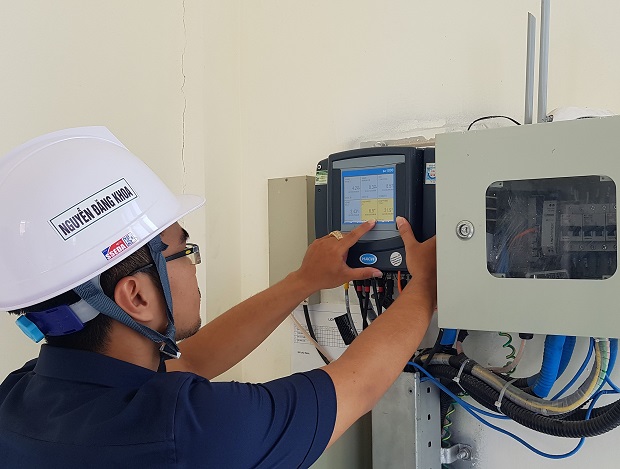Efforts to resolve pollution hotspots
In recent years, numerous effective measures have been taken to resolve Da Nang’s environmental pollution hotspots in a bid to build the city into an environmentally-friendly locality.
 |
| The odour control system at the Phu Loc wastewater treatment plant |
In the past, the problem of severe environmental pollution in the basin of the Phu Loc River adversely affected the health of residents nearby as well as their daily lives.
In order to deal with the problem, the Phu Loc wastewater treatment plant, with a daily treatment capacity of 40,000m3, was put into operation in October 2016.
The operation of the 200 billion VND plant has basically solved the problem of environmental pollution there.
However, the use of an anaerobic technology-based odour control system at the plant, and the installation of wastewater discharge pipes under the Phu Loc Bridge, caused bad smells at beaches nearby.
In attempting to handle bad odours, the management board of the plant has replaced the anaerobic technology-based odour control system with aerobic technology-based one, and installed wastewater discharge pipes here.
In addition, the plant’s environment monitoring system automatically updates and transfers data to the municipal Department of Natural Resources and the Environment for monitoring.
Also, the plant’s water environment monitoring office has been equipped with operation monitoring equipment to supervise the wastewater quality before being discharged into the sea.
 |
| An employee checking the plant’s control system |
Mr Tran Trieu from the Department’s Pollution Control Office said that there are some wastewater treatment plants using anaerobic technology-based odour control systems in Ngu Hanh Son District’s Hoa Hai Ward and Hai Chau District’s Hoa Cuong Nam Ward.
“In the coming time, the wastewater treatment plants in both districts will be upgraded. Especially, the Hoa Cuong Nam Ward plant will be converted into a domestic wastewater storage station. After that, the wastewater there will be transferred to the Hoa Xuan Ward wastewater treatment plant for treatment. The Hoa Xuan Ward plant’s daily capacity is expected to increase from 20,000m3 to 60,000m3”, he added.
Since the operation of the Son Tra wastewater treatment plant with a designed capacity of 25,500m3 per day in October 2016, the unpleasant odours nearby the Tho Quang fishing wharf have been resolved effectively.
Mr Dang Quang Vinh, Head of the Department’s Environment Protection Bureau, said that the Son Tra wastewater treatment plant has been equipped with 2 restrooms, garbage collection equipment, and seafood storage barrels.
He noted “The seafood processing businesses have been required to build their own wastewater treatment systems to reduce the capacity overload at the wharf’s dedicated treatment plant”.
In addition, plans on collecting garbage and wastewater discharged from fishing boats have been developed.
The installation of well water supply pipes at the wharf’s pier No 2, and 16 surveillance cameras, has been completed.
A focus has been on dredging sewers twice a month, regularly implementing the 'Green, Clean and Beautiful Sundays' campaign, and widely publicising environmental protection activities amongst local residents.
Checks over the quality of treated effluent from these seafood processing businesses have been increased in order to detect and deal with any violations.




